An arrangement of the masses and pulleys is shown in the figure. Strings connecting masses A and B with pulley are horizontal and all pulleys and strings are light. Friction coefficient between the surface and the block B is 0.2 and between block A and B is 0.7. The system is released from rest. (use g=10m/s2)
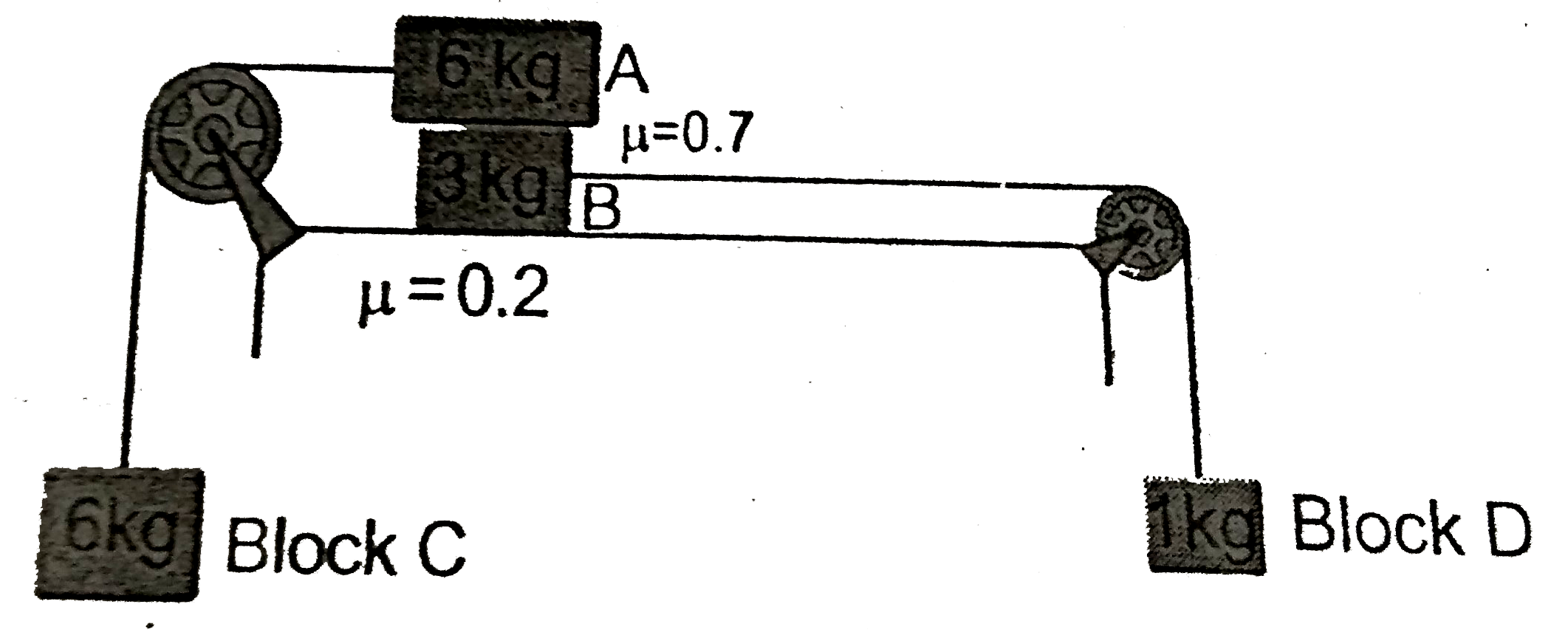
The magnitude of acceleration of the system is 2m/s2 and there is no slipping between block A and block B.
The magnitude of friction force between block A and blockB is 42N
Acceleration of block C is 1m/s2 downwards.
Tension in the string connecting block B and block D is 12N.
The correct Answer is:A, D
Suppose block A and B move together. Applying NLM on C,A+B, and D
60−18−T'=9a
T'−10=1a
Solving a=2m/s2
To check slipping between A and B , we have to find friction force in this case. If it is less than limiting static friction, then there will be no slipping between A and B. ltbr> Applying NLM on A.
T−g=6(2)
as T=48N
f=36N
and fs=42N hence A and B move together.
and T'=12N.
Topper's Solved these Questions
- BOOK - RESONANCECHAPTER - DAILY PRACTICE PROBLEMSEXERCISE - dpp 328videos
DAILY PRACTICE PROBLEMS
- BOOK - RESONANCECHAPTER - DAILY PRACTICE PROBLEMSEXERCISE - dpp 338videos
DAILY PRACTICE PROBLEMS
- BOOK - RESONANCECHAPTER - DAILY PRACTICE PROBLEMSEXERCISE - Comprehension127videos
DAILY PRACTICE PROBLEMS
- BOOK - RESONANCECHAPTER - CURRENT ELECTRICITYEXERCISE - Exercise54videos
CURRENT ELECTRICITY
- BOOK - RESONANCECHAPTER - ELASTICITY AND VISCOCITYEXERCISE - Advanced Level Problems9videos
ELASTICITY AND VISCOCITY
Similar Questions
find the acceleration of the block of mass M in the situation shown in figure. All the surfaces are frictionless and the pulleys and the string are light.
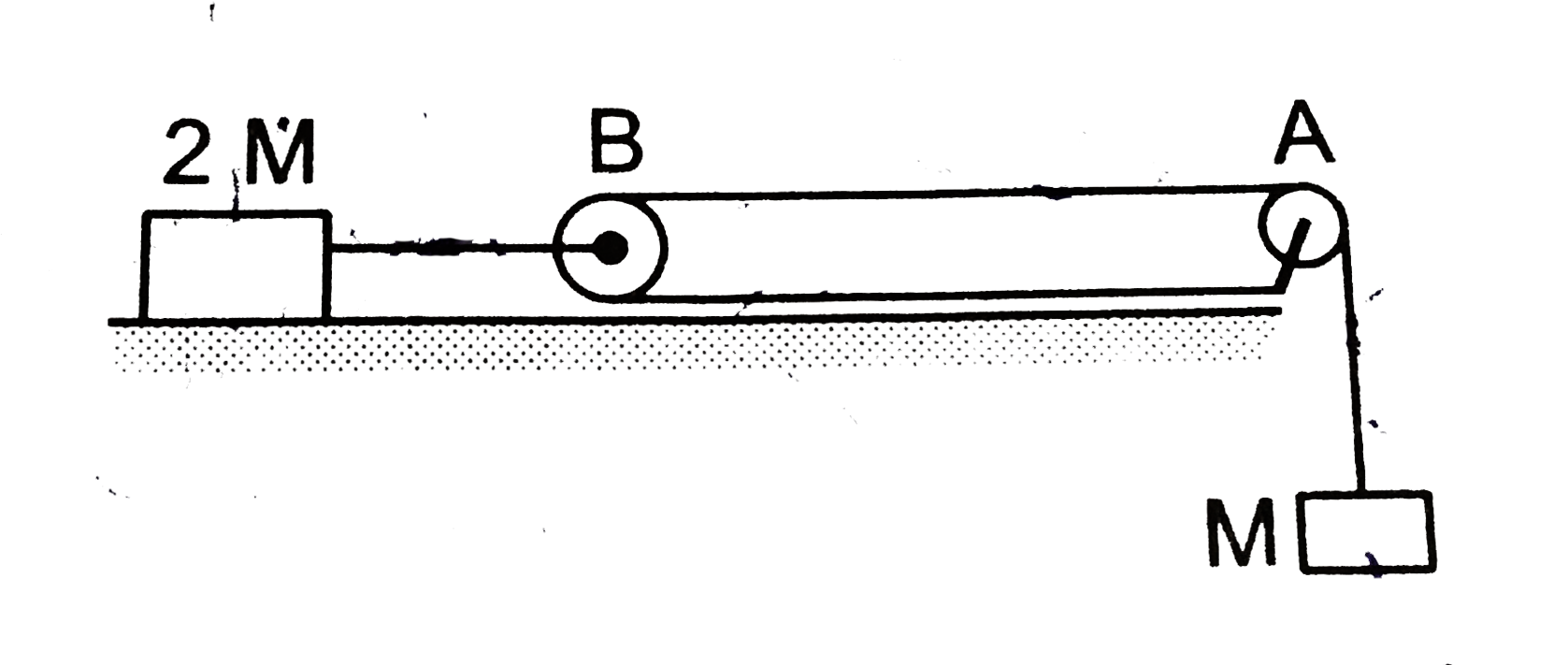 View Solution
View SolutionBlock A of mass m and block B of mass 2m are placed on a fixed triangular wedge by means of a light and inextensible string and a frictionless pulley as shown in fig . The wedge is inclined at 45∘ to the horizontal on both sides . The coefficient of friction between the block Aand the wedge is 2/3 and that between the block B and the wedge is 1/3 .If the system of AandB is released from rest then find .
a. the acceleration of A
b. tension in the string
c.the magnitude and direction of the frictional force acting on A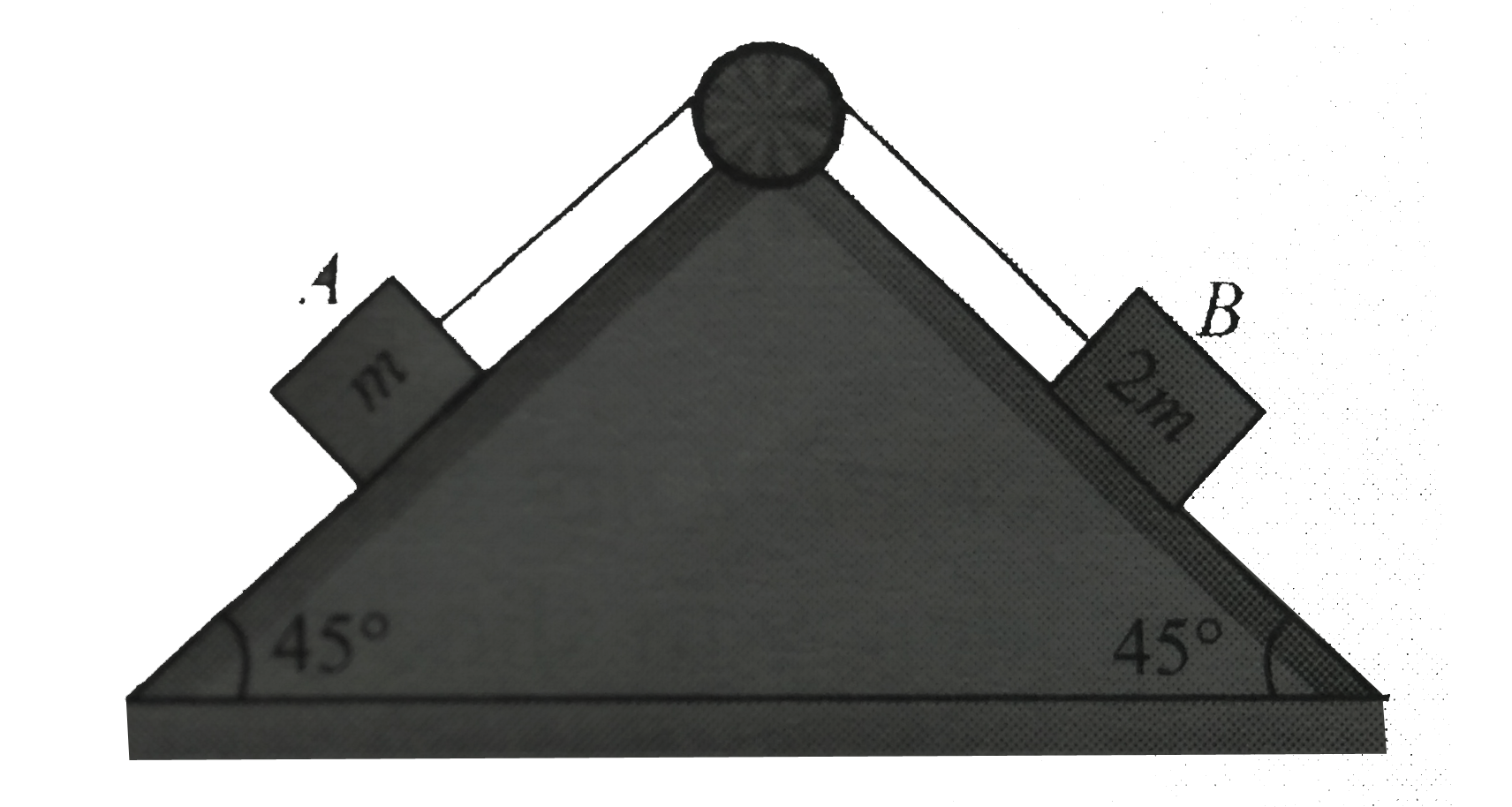 View Solution
View Solution
Knowledge Check
- Question 1 - Select One
In the system shown all the surfaces are frictionless while pulley and string are massless. The mass of block A is 2m and that of block B is m. The acceleration of block B immediately after system is released from rest is
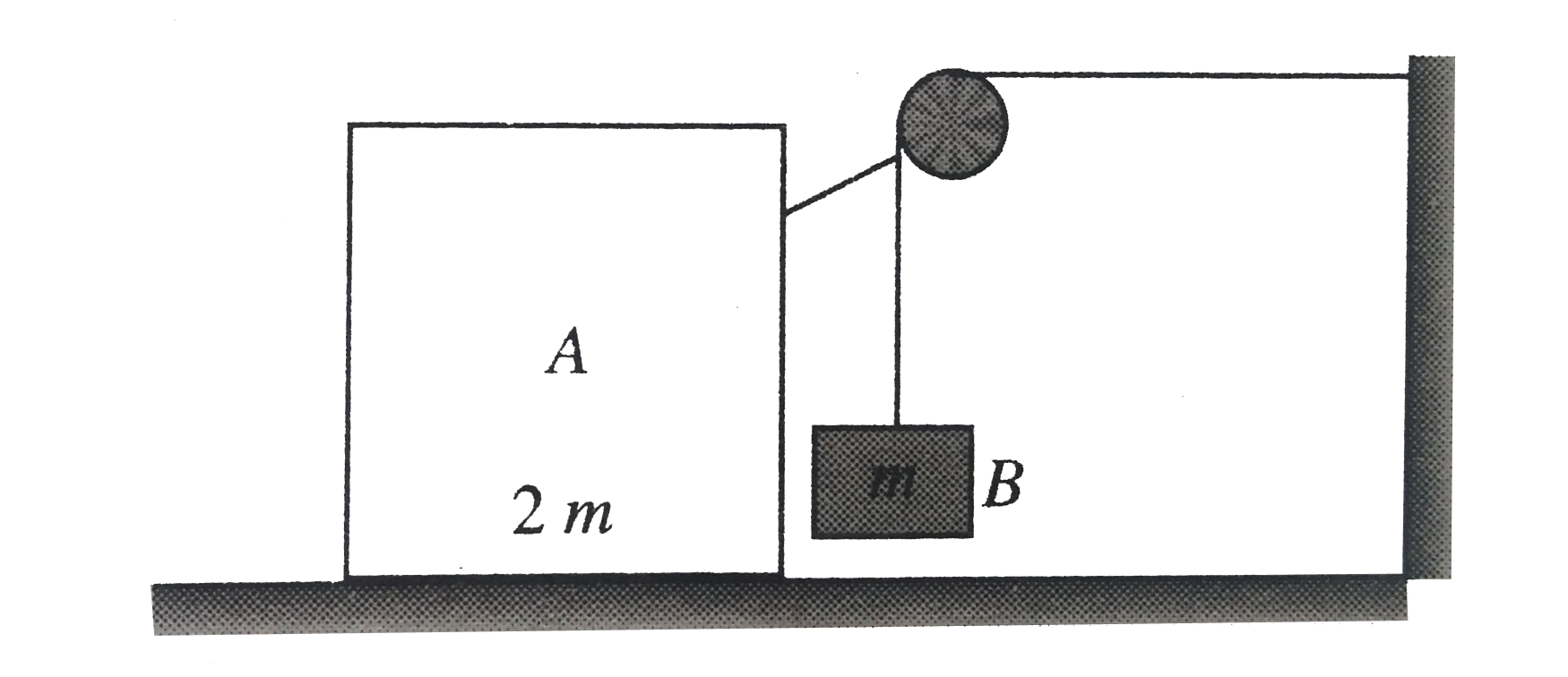 Ag/2BgCg/3DNone of these
Ag/2BgCg/3DNone of these - Question 2 - Select One
In the given figure, Find mass of the block A, if it remains at rest, when the system is released from rest. Pulleys and strings are massless. [g=10m/s2]
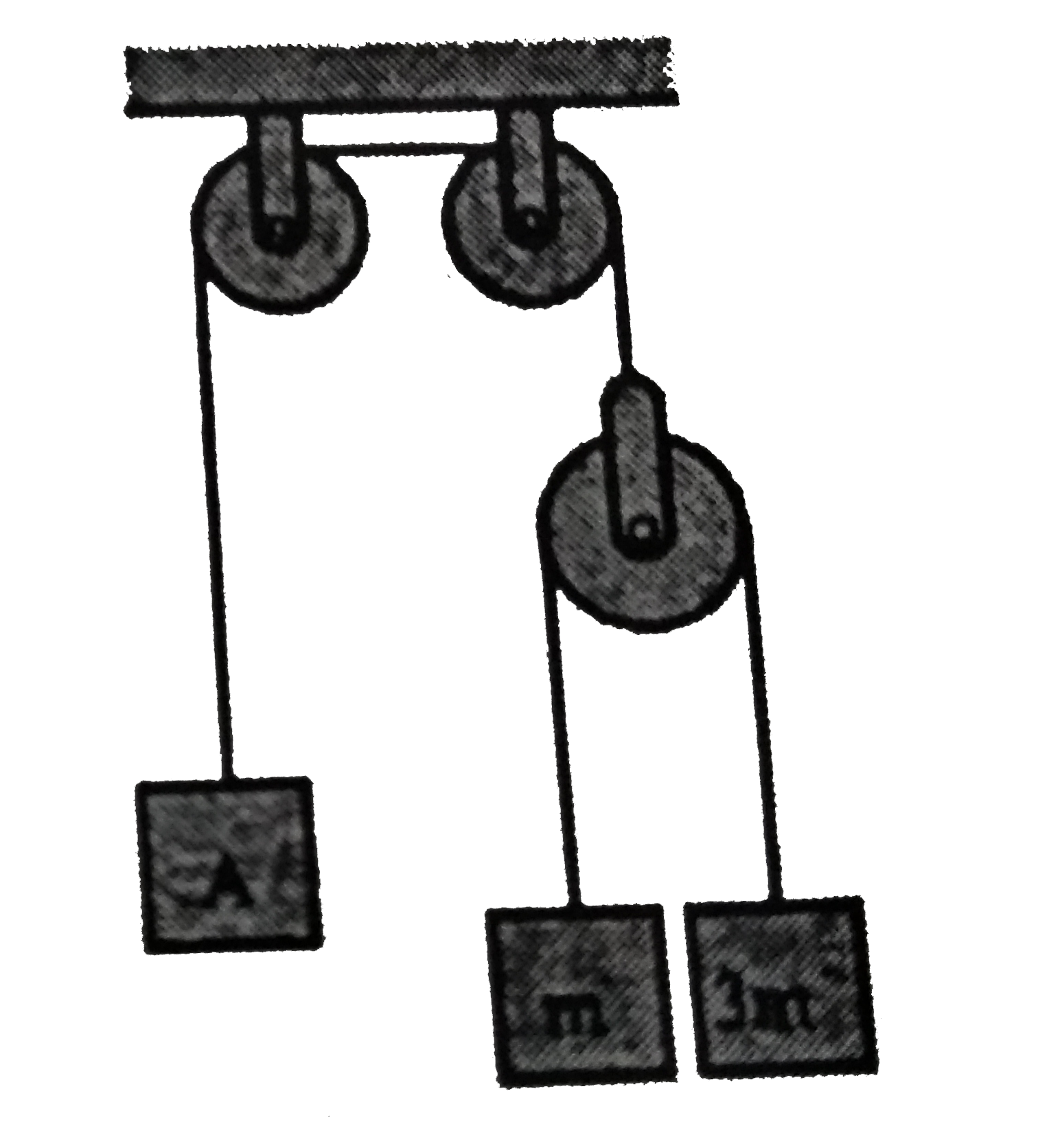 AmB2mC2.5mD3m
AmB2mC2.5mD3m - Question 3 - Select One
In the arrangement shown, the pulleys and strings are massless. The acceleration of block B is :
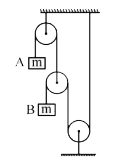 Ag/2B5g/3C2g/3D2g/5
Ag/2B5g/3C2g/3D2g/5
In the arrangement shown, the pulleys and the strings are ideal.The acceleration of the block B is
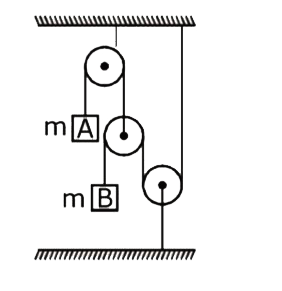 View Solution
View SolutionFriction coefficient between any two surface in contact is 0.5 pulleys and string aare frictioness .Find the friction between blocks A and B ( in newton)
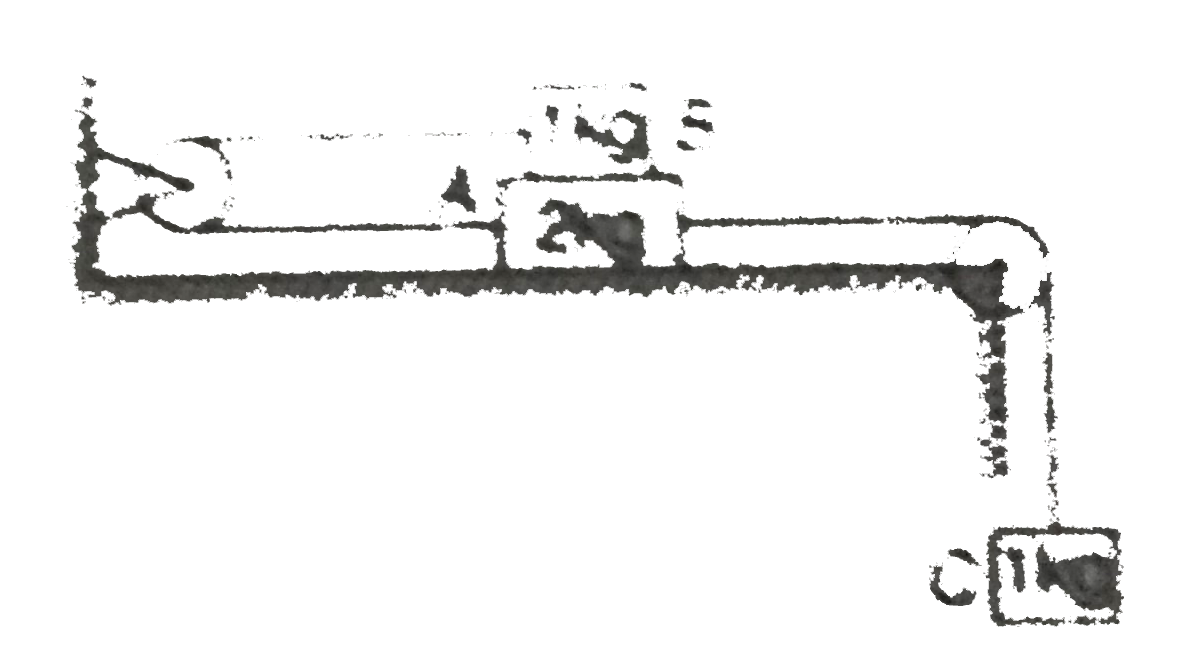 View Solution
View SolutionIn the arrangement shown in figure, pulley and string are light. Friction coefficient between the two blocks is μ whereas the incline is smooth. Block A has mass m and difference in mass of the two blocks isδm. Find minimum value of m for which the system will not accelerate when released from rest.
 View Solution
View SolutionIn the arrangement shown in fig neglect the masses of pulleys and string and also friction Calculate acceleration of blocks A and B
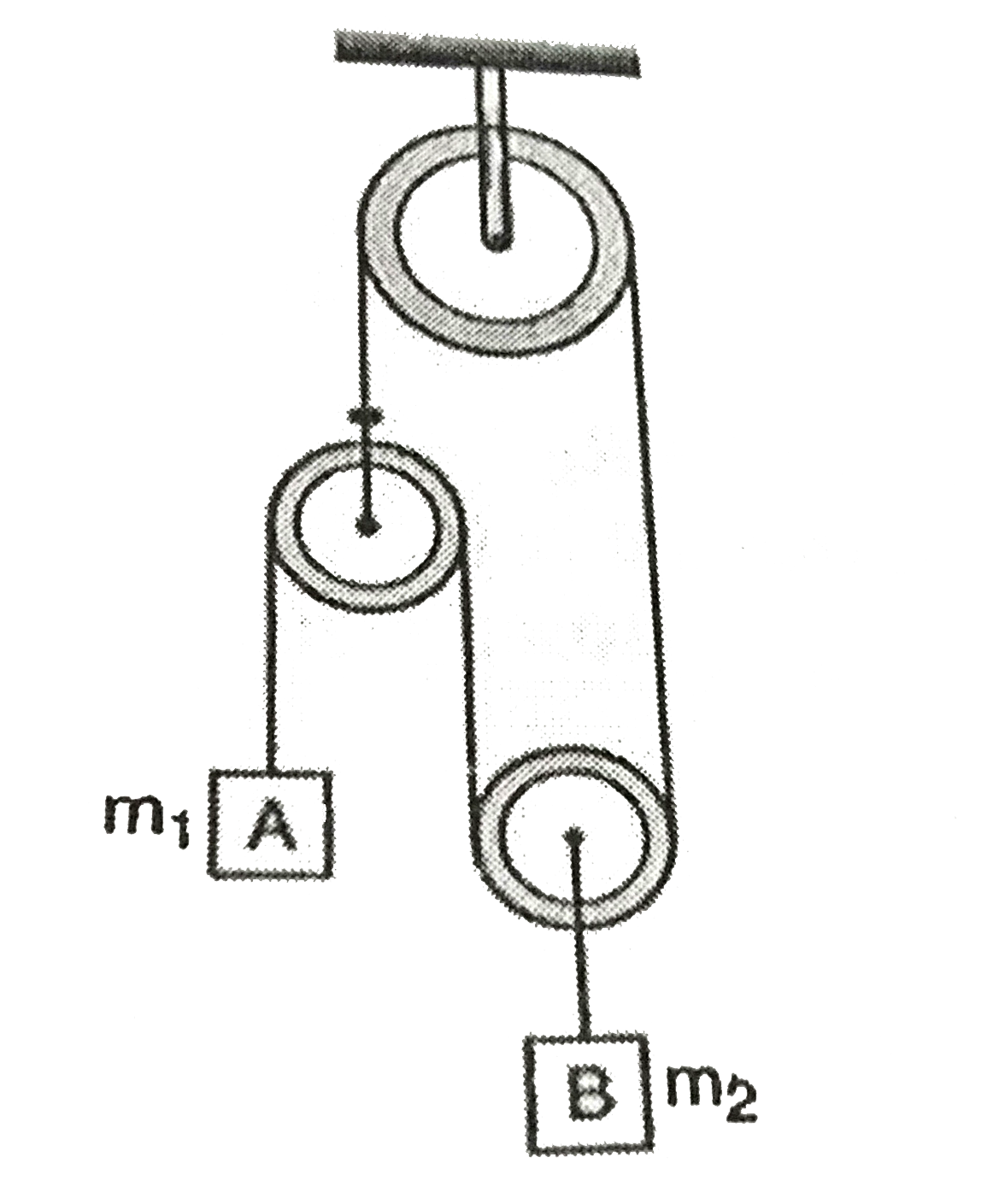 View Solution
View SolutionIn the arrangement shown, the pulleys and the string are ideal. The acceleration of block B is.
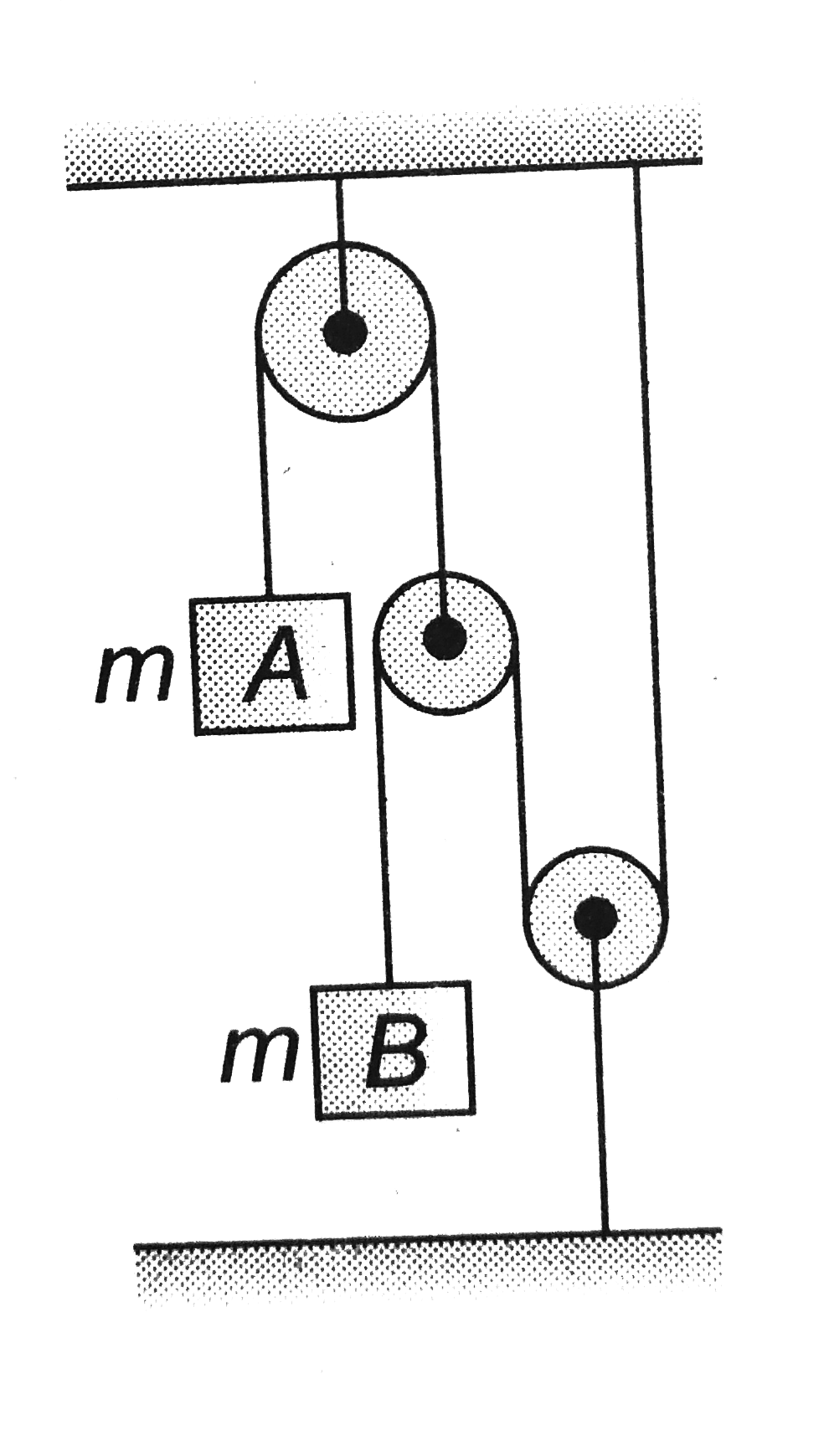 View Solution
View Solution

